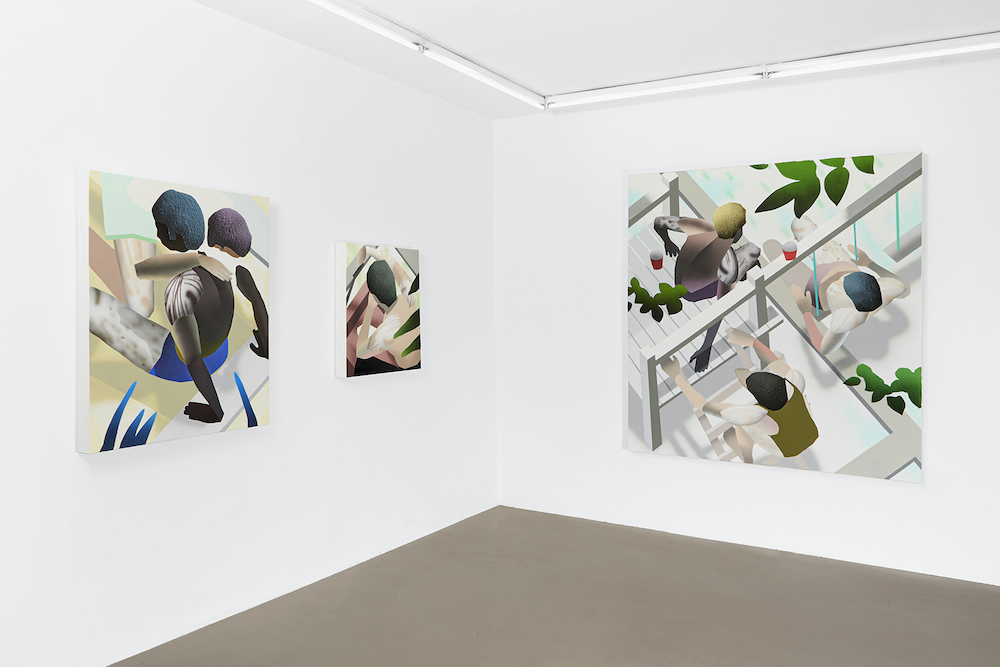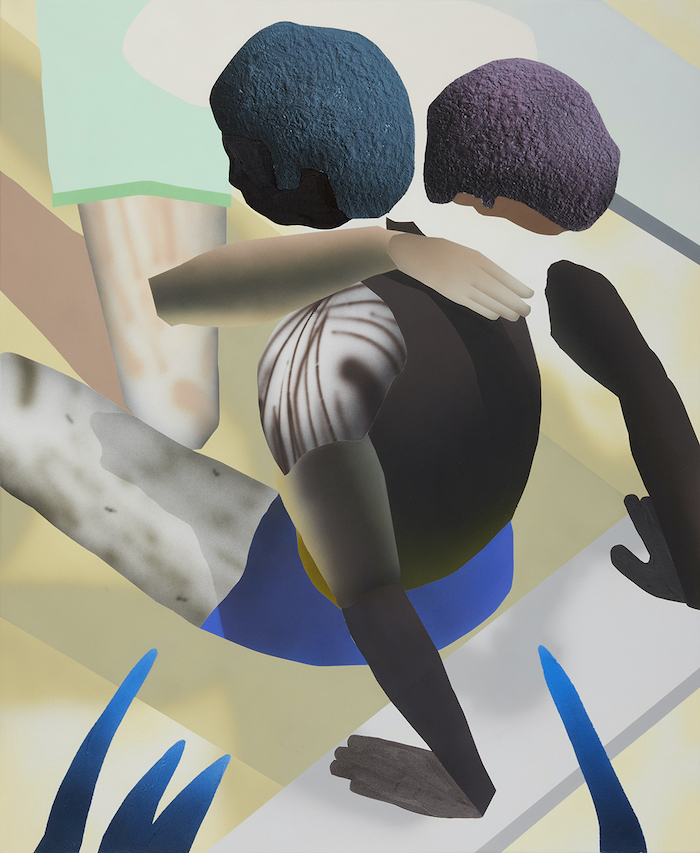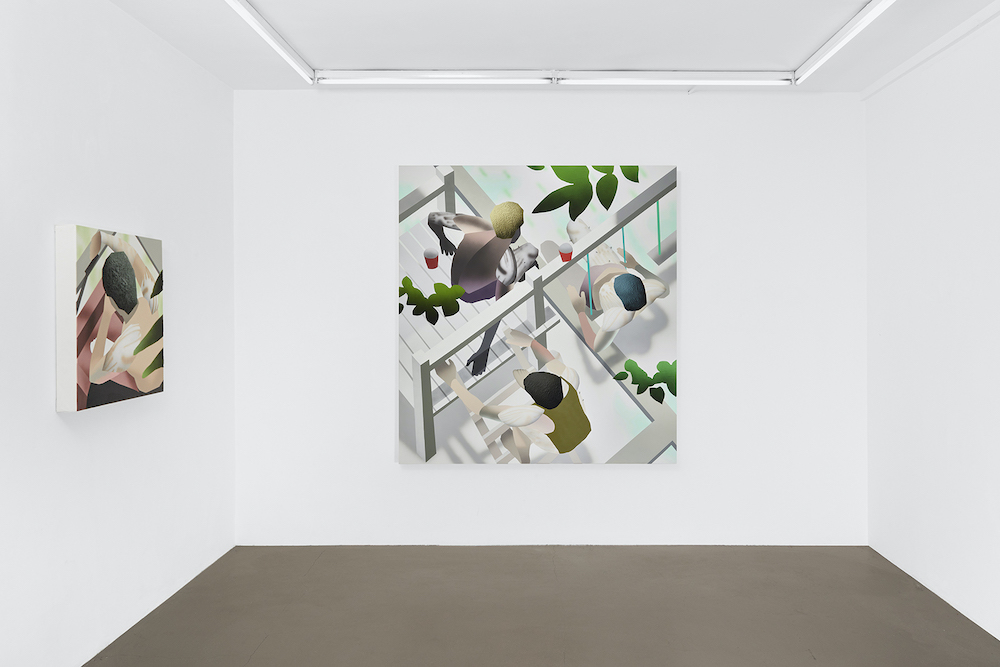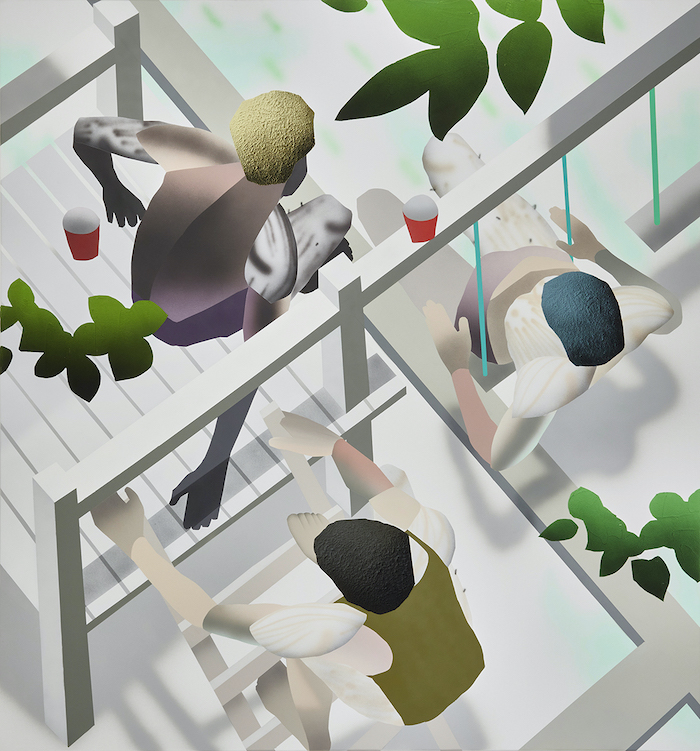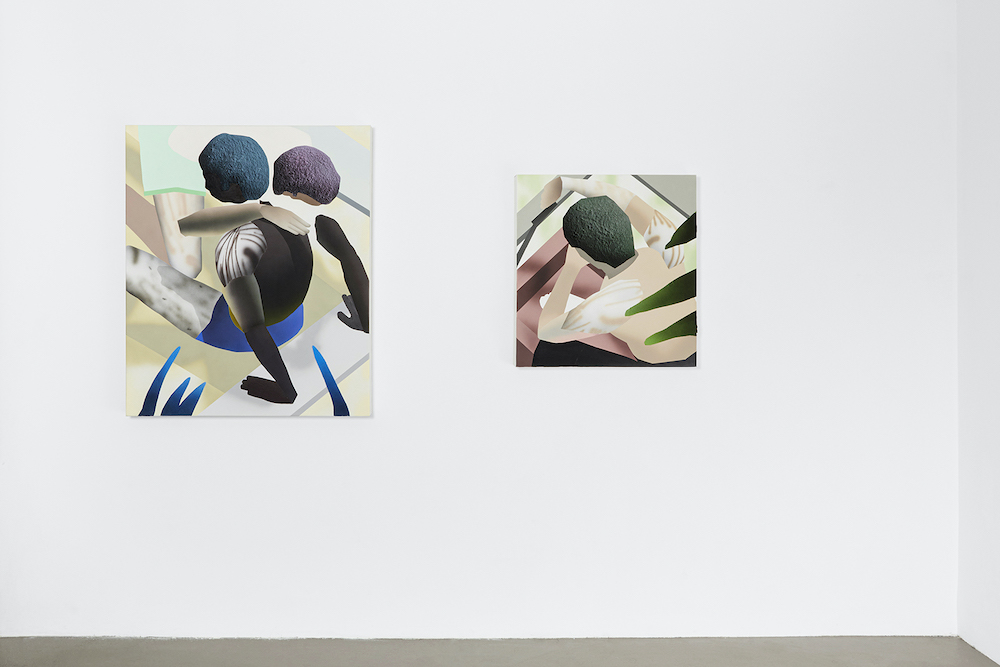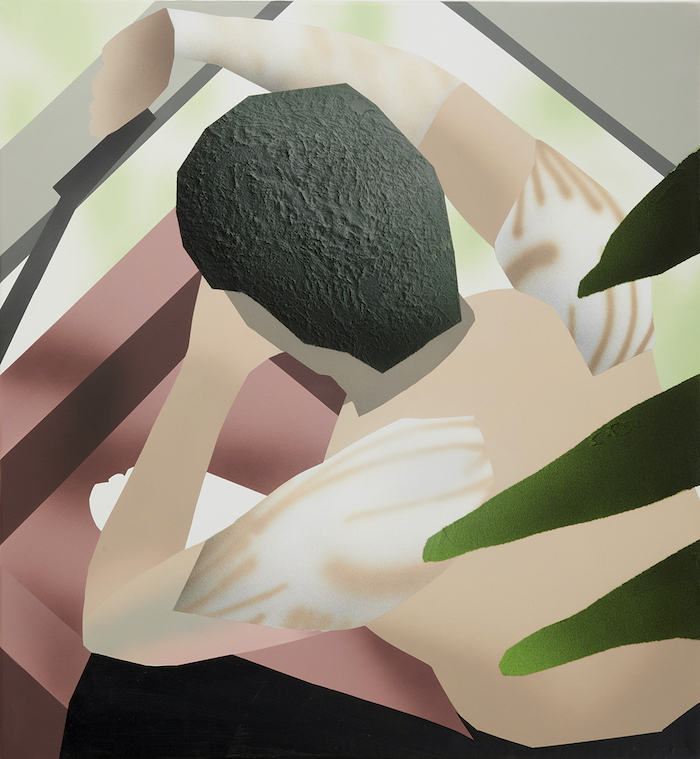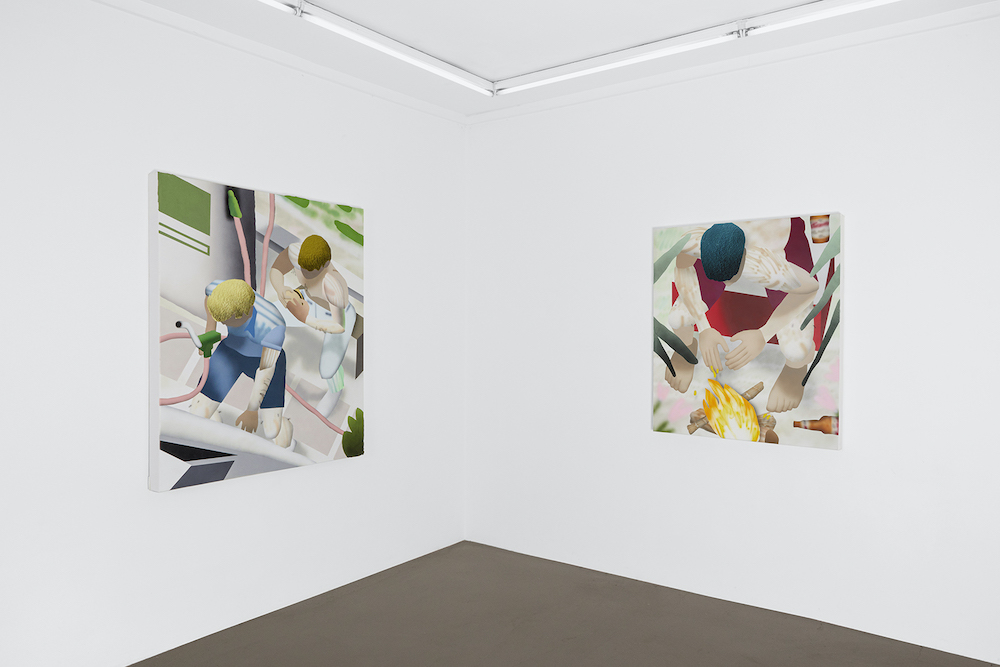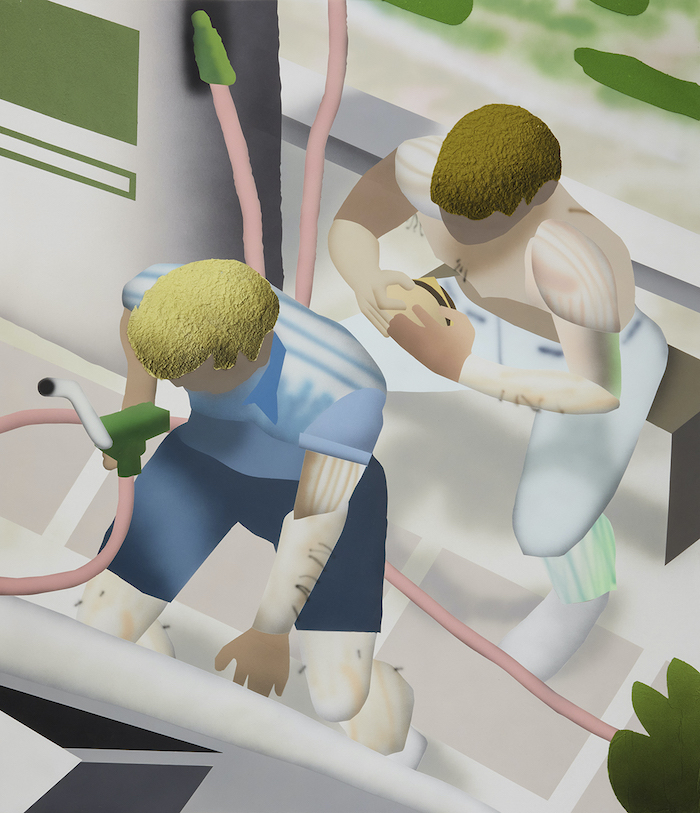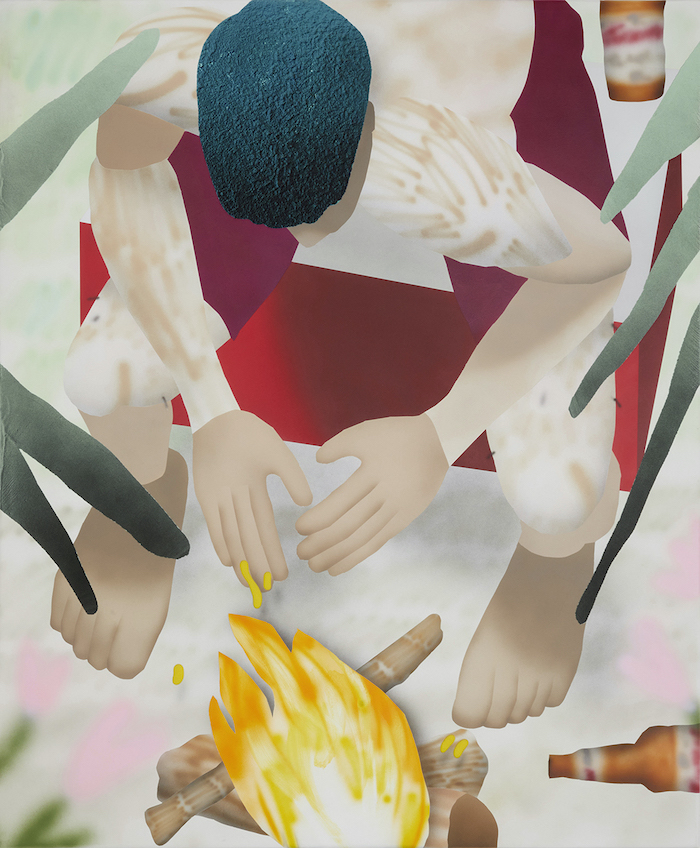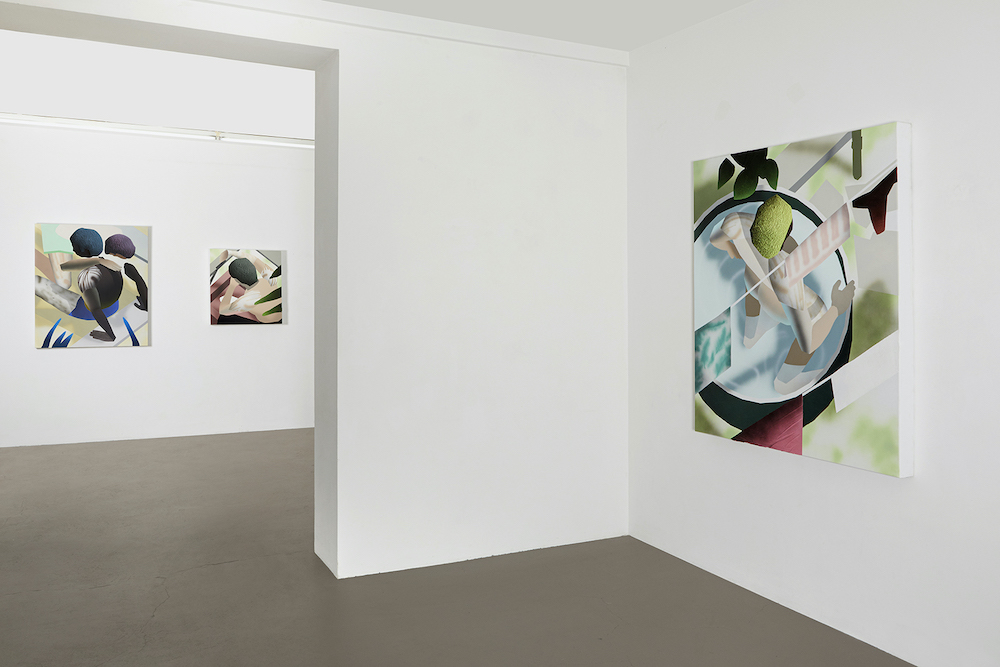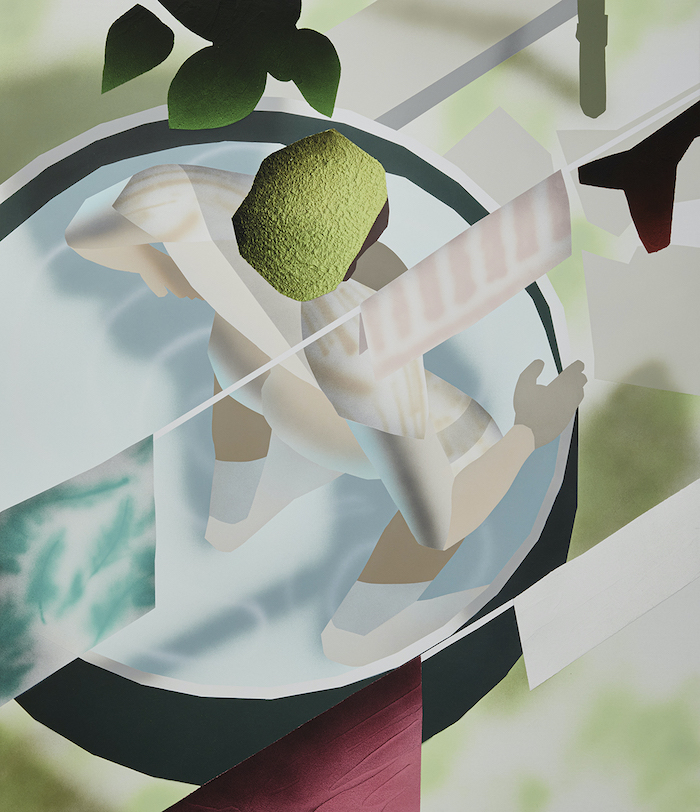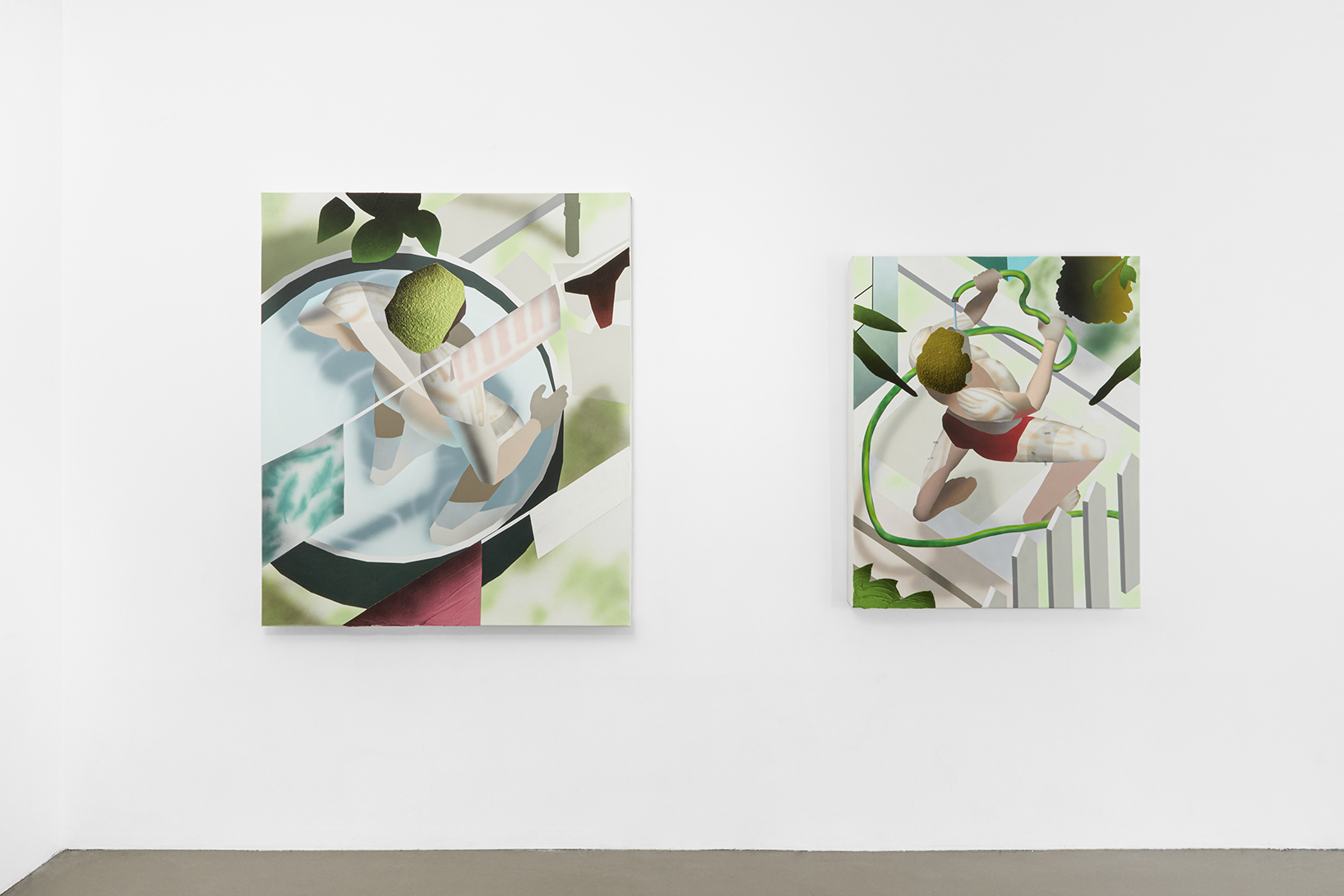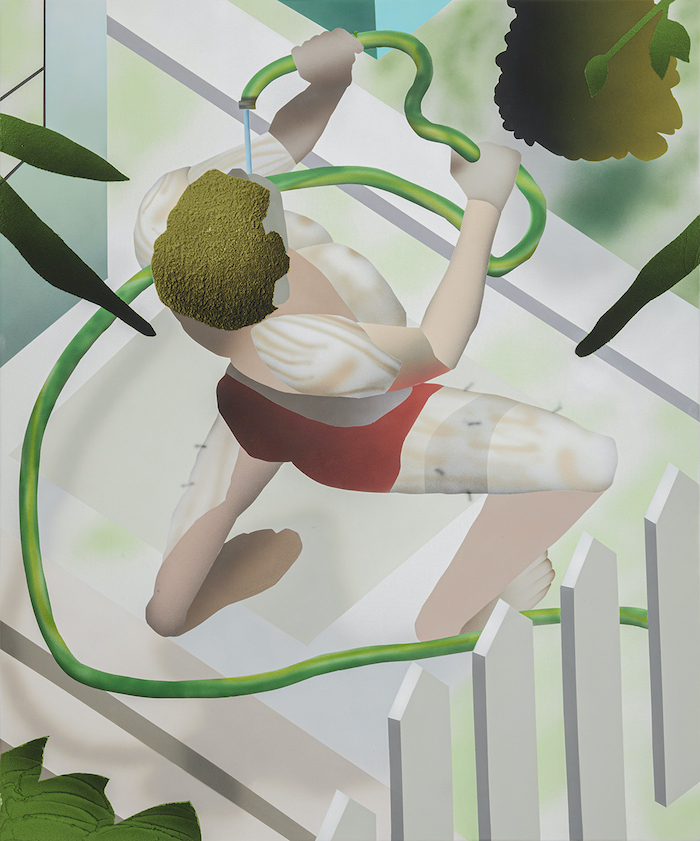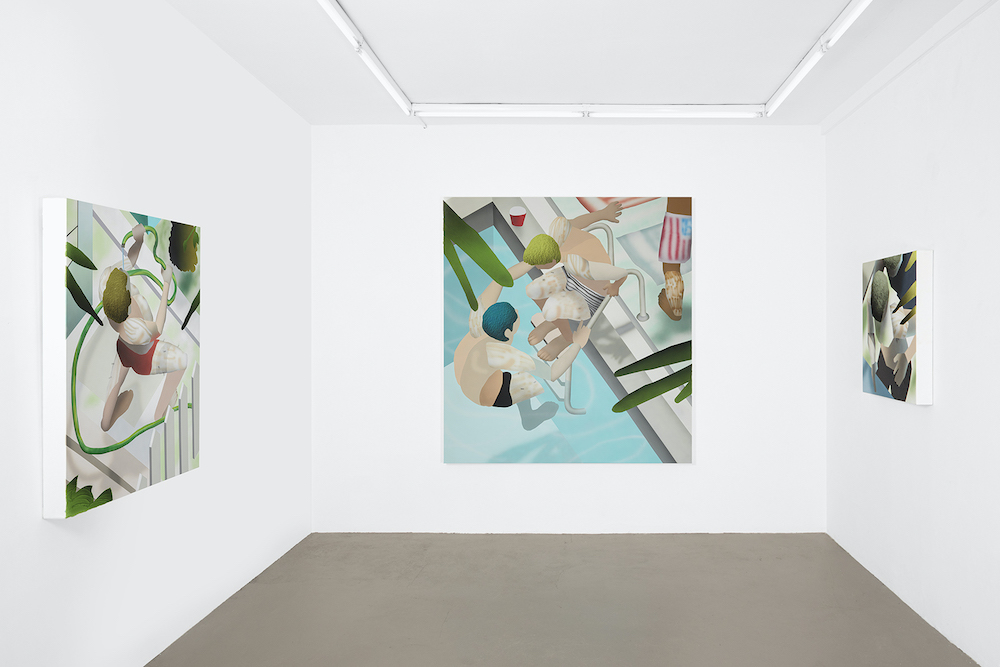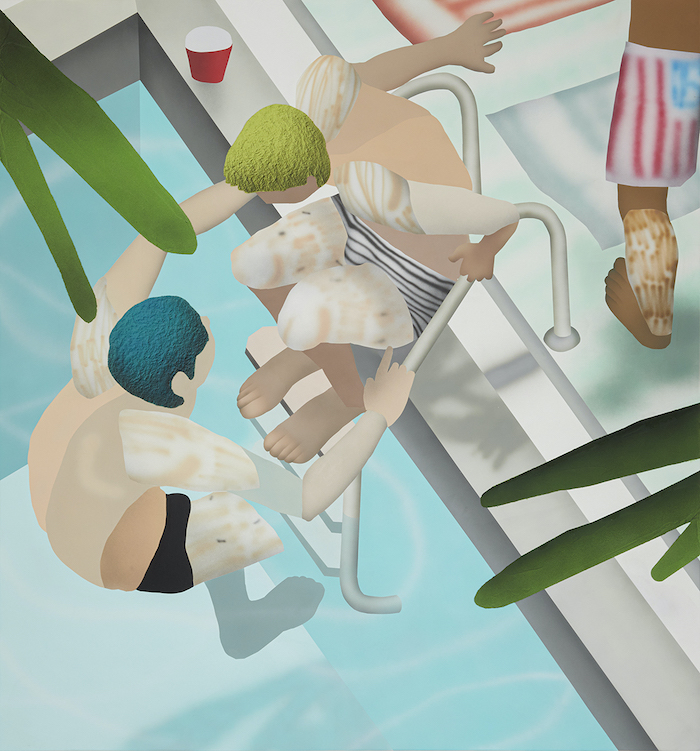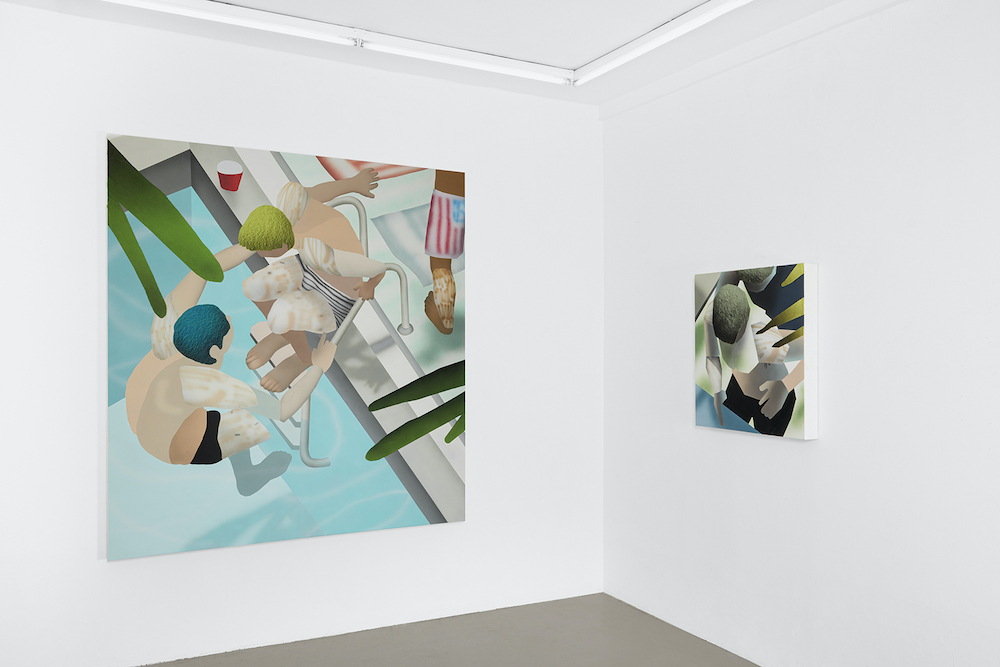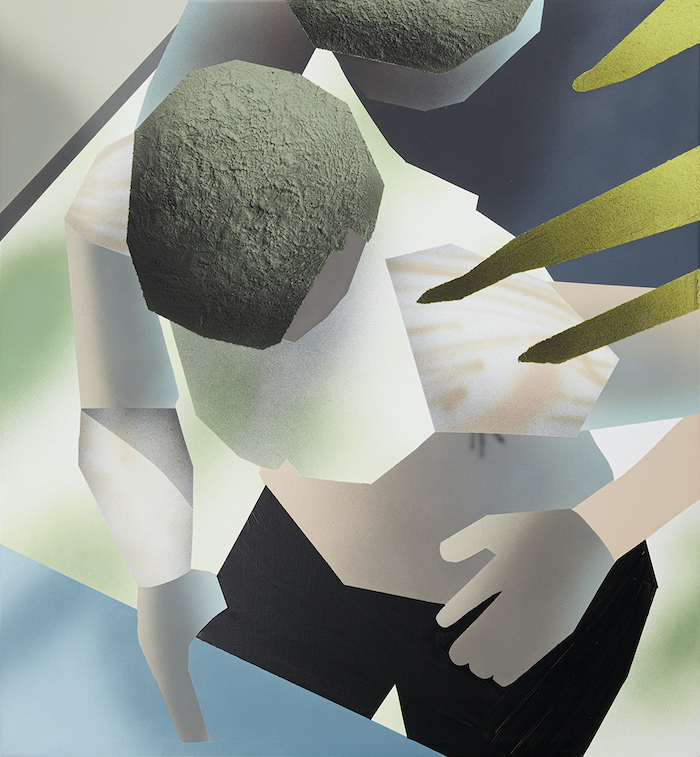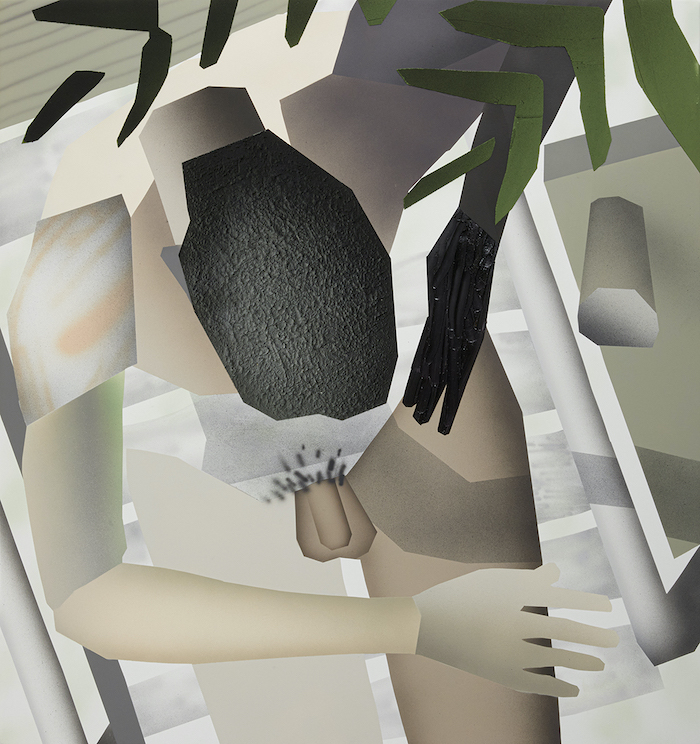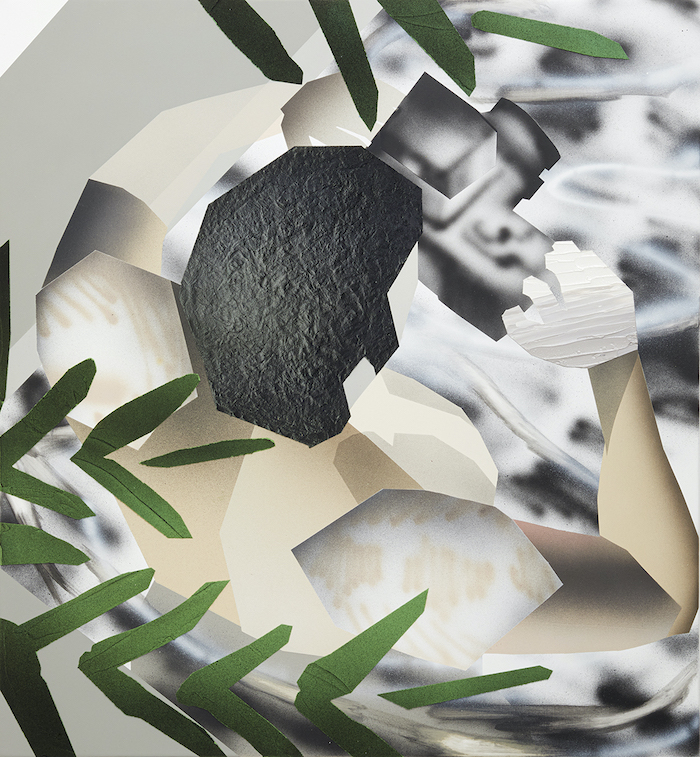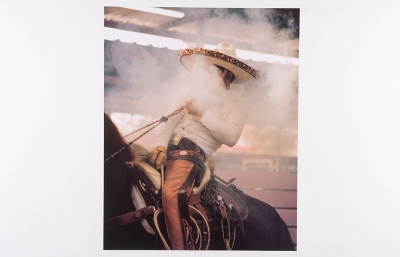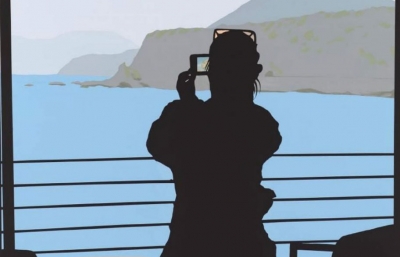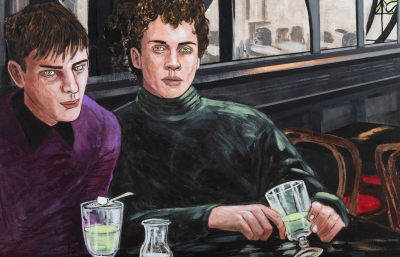Following his successful solo debut in 2018, Brandon Lipchik is back at Julien Cadet in Paris with a new solo presentation titled Lawnscaping. Continuing the development of his visual language and broadening of his personal interests, the new body of work is an intertwining of American, queer and personal narratives.
We first featured Lipchik some two years ago when he started working in the Post Digital Pop manner alongside Jux favorite, Oli Epp, and few other artists that found a balance between analog and digital. Since then, he has been developing his practice in different directions, yet always keeping the two influences in a symbiotic relationship. Creating sharp visuals, playing with depth and perspective by mixing techniques, experimenting with textures and surfaces, his work is continuously seducing the viewer both on a contextual and conceptual level. The press release for the show explains: "Lawnscaping is a term coined by Lipchik that contextualizes the setting of a private yet public outdoor scape and the process of worldbuilding and staging in the virtual."
The current series of paintings seem to be utilizing a variety of successful concepts used in his past work, adding to the thrill and quality of essentially classic figure-based imagery. Mixing texture-rich, almost sculptural sections that depict hair, solid painted sections that form a figure, along with wispy airbrushed sections that create secondary objects like drinks, fire, hoses, as well as construct shadows, depth, and perspective elements, Lipchik is building an exciting tension between seemingly unrelated components. Putting them together in what seems like the only way that forms a coherent image, reveals his interest in abstraction underlying this body of work. This is probably most evident in some of the sections in which surfaces are made from mere scribbles that successfully delineate the anatomy of the subject.
Dominated by male figures portrayed from a slightly odd perspective, the images are referencing American films of the 1980s and 90s, focusing on the conformity of suburban life. Captured from above, all the subjects are faceless and therefore mysterious and expressionless, leaving the interpretation of the scene to the viewer. Mostly picturing the scenes of leisure and relaxation one can't help but feel the suggestion of sexual tension somewhere between the lines. It's the unusual use of the (low flying) bird's-eye view that adds the sense of unease or drama, as the scenes feel observed by a stranger not participating in the activity, but peeping from a window nearby. —Sasha Bogojev
Photos by Thomas Marroni



